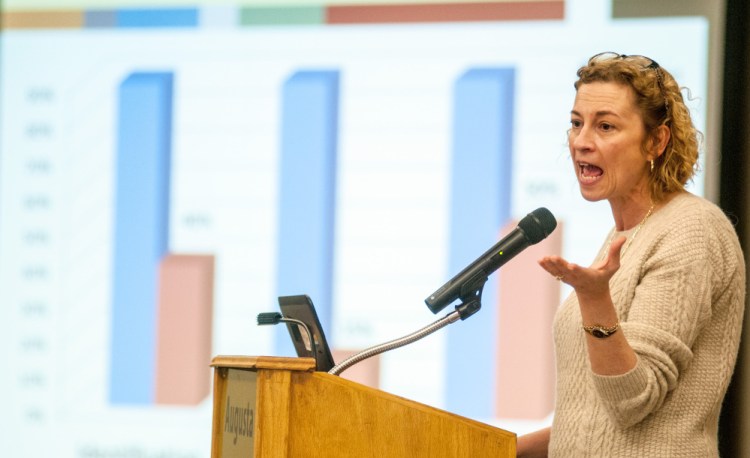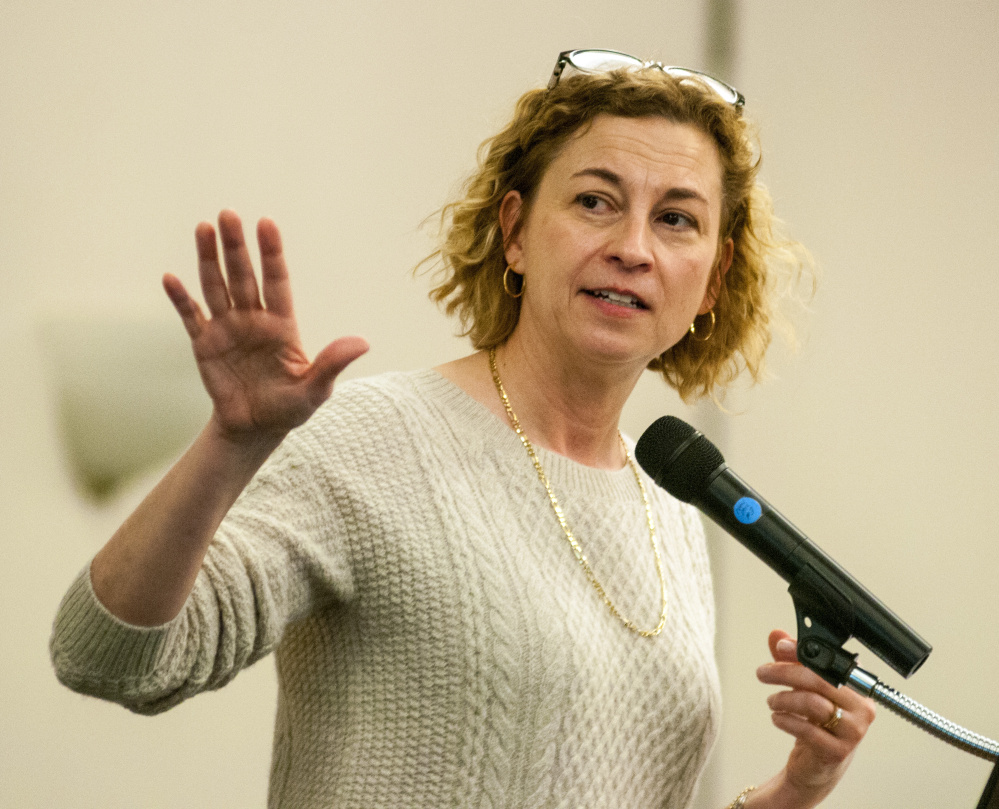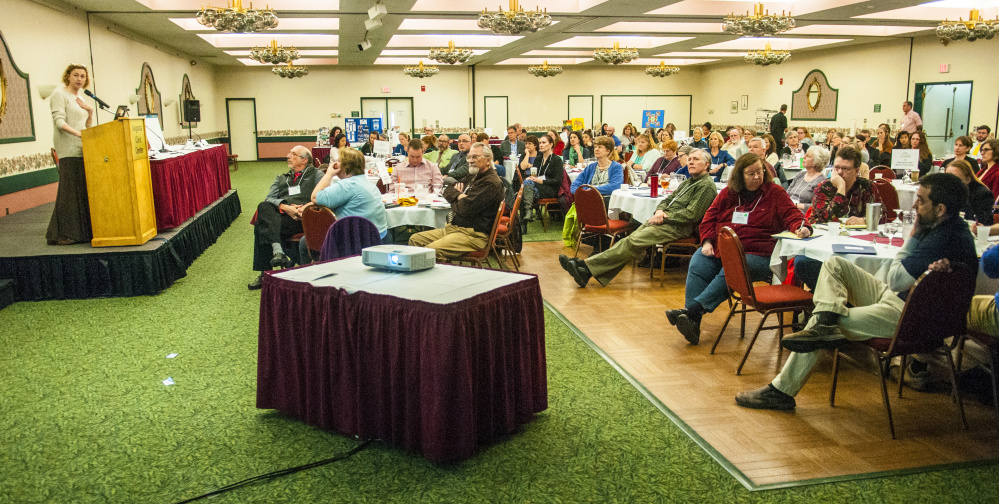The unmet need of Americans with drug and alcohol addictions can seem staggering, even to the director of a federal agency that has $2.5 billion at its disposal to attack those diseases.
During a conference Wednesday focused on the state’s opioid epidemic, Kimberly Johnson, director of the federal Center for Substance Abuse, gave a keynote address about efforts to stem that ongoing crisis, which has crossed state lines.
In Johnson’s field, there’s a commonly mentioned statistic — that just 10 percent of Americans get the substance abuse treatment they need.
“I’m really tired of saying only 10 percent of people get treatment that need it,” she told the crowd Tuesday. “That statistic had a purpose: to highlight how few people get treatment, but it sort of makes the problem seem unsolvable. It’s so overwhelming.”
Johnson was speaking at the Augusta Civic Center as part of the annual meeting of the Co-Occurring Collaborative Serving Maine, a statewide group of organizations focused on solving the needs of Mainers with mental illness, drug addiction and other behavioral challenges.
It was a familiar setting for Johnson, who used to head the Maine Office of Substance Abuse — now the Office of Substance Abuse and Mental Health Services. She began working for federal agency in February 2016.
Johnson devoted the first part of her talk to describing the federal funding that’s coming to states such as Maine through two laws passed by Congress in the last year to help slow the tide of opioid abuse. Johnson also described steps Maine agencies can take to improve the treatment services they currently offer and to expand the number of people receiving them.
She was speaking in Augusta just a week after Maine lawmakers showed strong support for a bill that would direct $4.8 million in state and federal dollars to expanding the statewide use of medication-assisted treatment for opioid addiction.
The widespread support for those measures comes on the heels of a year in which a record number of Mainers, 378, died from drug overdoses, up from 275 in 2015. Heroin, fentanyl and opioid painkillers accounted for 313 of the 378 deaths in 2016, according to data from the Maine attorney general’s office.
Johnson showed one set of statistics that highlighted how Maine first responders have tried to blunt that deadly surge: The number of Mainers who received a dose of naloxone, a drug that reverses the effects of an opioid overdose, more than doubled from 426 in 2011 to 1,028 in 2015.
Just 19 percent of Mainers with drug addictions received treatment for their substance abuse in 2015. Now federal funds are on the way to get more Mainers medication-assisted treatment for opioid addiction. One medication, Suboxone, is considered by many experts to be the gold standard of treatment options.
About $2 million is coming to Maine to expand medication-assisted treatments as part of the 21st Century Cures Act, a law that passed in Congress late last year, Johnson said; but she did not know how state health officials proposed using those funds.
Johnson also spoke of other measures those in the addiction treatment community must take to get past that 10 percent statistic.
She told the crowd that more health care providers and counselors need to begin treating opioid addiction. Because of a shortage of people in those roles, Johnson also said that more peers should get involved in helping drug users recover.
About eight states have funded peer support workers for drug addiction with their Medicaid programs, according to Johnson.
But Maine is not one of them, said Darren Ripley, the coordinator of the Maine Alliance of Addiction Recovery, an organization based in Augusta. Since 2013, Ripley has been training volunteer recovery coaches to serve as mentors of Mainers trying to get off drugs. He has trained more than 100 coaches, including about 50 in the last year, and now is trying to develop a licensing process for the trainees.
“A lot of times I’ve seen recovery coaches act as a bridge to treatment,” said Ripley, who was at the Wednesday conference. But he said that recovery coaches try to steer drug users to whatever treatment option appeals to them, whether it’s Suboxone or abstinence.
One difficulty for people who are addicted to opioids is that they might not want to enter drug treatment, Johnson said. She cited the case of Florida, a state with an oversupply of treatment programs but many drug users who haven’t pursued those treatment opportunities.
“I don’t think this a ‘build it and they will’ come condition,” she said.
While most people enter drug treatment after they’ve been arrested or had other contact with the criminal justice system, Johnson said there must be more outreach to drug users — and that might mean trying to reach them while they’re still using.
“We can start care while people are still using,” Johnson said. “We need to give them what they want. They have to have choice.”
Charles Eichacker — 621-5642
Twitter: @ceichacker
Send questions/comments to the editors.






Comments are no longer available on this story